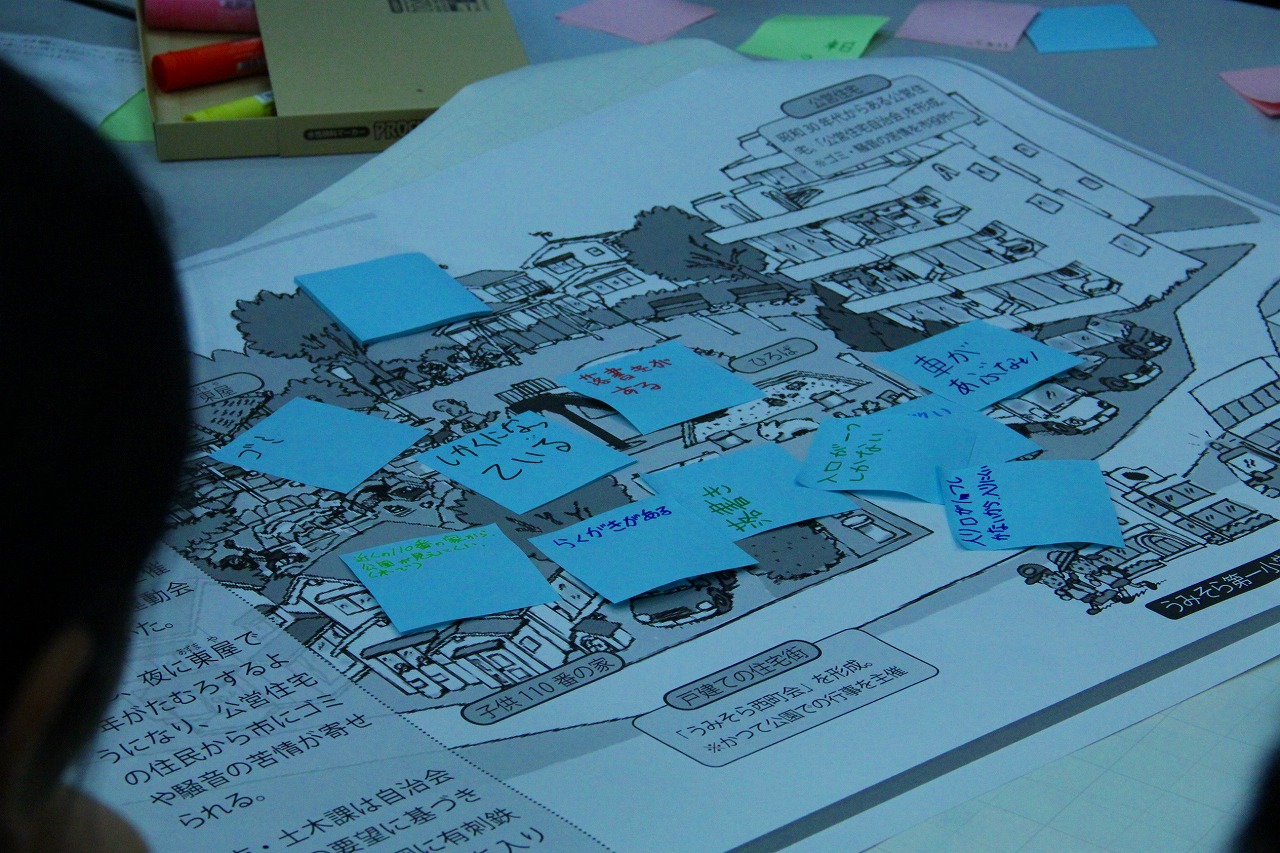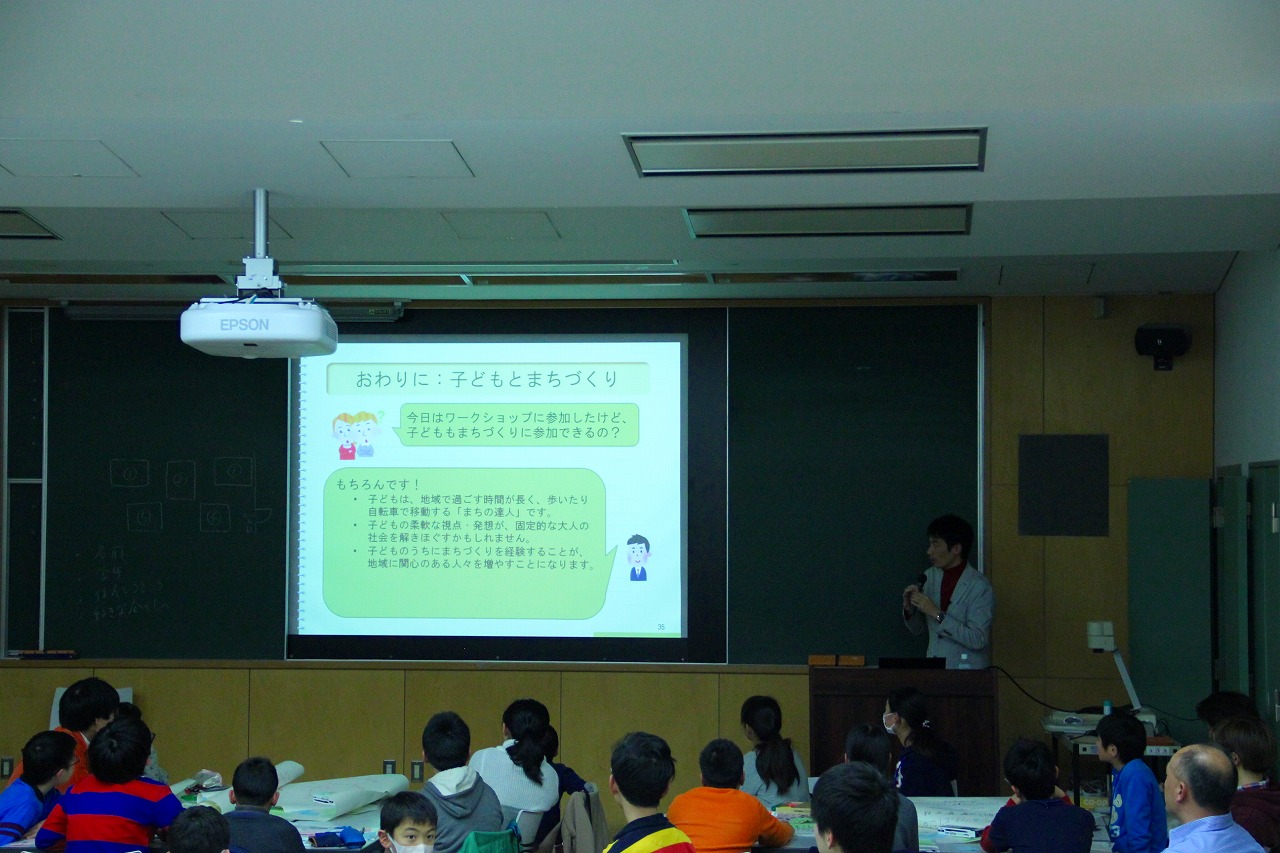Boeing Higher Education Program
BoeingHigherEducationProgram
-
The 76th Komaba Festival Participation Project “Want to Know More about the World of the Faculty of Engineering"

At the 76th Komaba Festival, held from November 22 to 24, 2025, the Faculty of Engineering’s Publ...
November 22, 2025 -
The 75th Komaba Festival Participation Project “Want to Know More about the World of the Faculty of Engineering

The 75th Komaba Festival was held from November 22 to 24, 2024, at the University of Tokyo’s Koma...
November 22, 2024 -
The 34th UTokyo Techno-Science Café’s Report

"Experience Cutting-edge Research in Chemistry, Life Sciences, and Physics." On August 5, 2023,...
August 05, 2023 -
Techno-Science Café’s Extra Edition Report

Techno-Science Café’s Extra Edition Engineering x Gal "Engineering Onimori Technology↑↑ Wireles...
November 03, 2022 -
The 32th UTokyo Techno-Science Café Report

The 32th Techno-science café, “Construction Work Using LEGO Brick” was held on October 19, 2019. ...
October 19, 2019 -
The 31th UTokyo Techno-Science Café Report

The 31st Tokyo University Techno-Science Café, "Useful Surface Science to Know -Science of Wettin...
August 03, 2019 -
The 30th UTokyo Techno-Science Café Report

The 30th Techno-science café, “What is the strength? Let’s make a pasta bridge” was held on Augus...
August 02, 2019 -
The 25th UTokyo Techno-Science Café Report

The 25th Techno-Science Café was held on July 31, 2017. About 30 students, mainly elementary scho...
July 31, 2017 -
The 24th UTokyo Techno-Science Café Report

On July 28, 2017, the 24th Techno-Science Cafe was held at the building 11 of the Faculty of Engi...
July 28, 2017 -
The 23rd UTokyo Techno-Science Café Report

The 23rd Techno-Science Café was held on December 11, 2016. About 20 students mainly from element...
December 11, 2016 -
The UTokyo Techno-Science Café Special Version Report

The 22nd Techno-Science Café, “Design and Manufacturing” was held again on August 10, 2016. About...
August 10, 2016 -
The 22nd UTokyo Techno-Science Café Report

The 22nd Techno-Science Café, “Design and Manufacturing” was held on July 25, 2016. About 30 stud...
July 25, 2016 -
The 21st UTokyo Techno-Science café Report

The 21st Techno-science café, “Let’s fly out to the Space!” was held on March 19, 2016. About 50 ...
March 19, 2016 -
The 18th UTokyo Techno-Science café Report

The 18th Techno-science cafe was held on March 7, 2015, and the theme was "Making Safe Cities: Cr...
May 07, 2015 -
The 14th UTokyo Techno-Science café Report1

The 14th Techno-science Cafe was held on November 10. The theme was "The frontier technology, inn...
November 10, 2013 -
The 13th UTokyo Techno-Science café Report1

The 13th Techno-science café was held on 28th July. The theme was “The batteries and the future o...
July 28, 2013 -
The 13th UTokyo Techno-Science café Report2

Techno Science Cafe ‘The Future of Battery and EV’ was held on 28th, July, 2013 in the University...
July 28, 2013 -
The 11th UTokyo Techno-Science café Report2

On the 24th of March 2013 was held a TechnoScience Café "Engineering Dojo" at the University of ...
March 24, 2013 -
The 11th UTokyo Techno-Science café Report1

The 11th Todai Techno-Science café was held on 24th Mar. This time its theme was “Engineering sch...
March 24, 2013
The 18th UTokyo Techno-Science café ReportMay 07, 2015

The 18th Techno-science cafe was held on March 7, 2015, and the theme was "Making Safe Cities: Crime Prevention in the Community". Nearly 40 elementary and junior high school students participated in the event.
At the beginning and end of this event, we heard a lecture by Prof. Hino, who belongs to the Department of Urban Engineering. He first explained what urban engineering is, and after that he introduced his field of research with various facts and examples, such as the unexpected reality of the number of crimes in Japan (which has, in fact, declined recently), an analysis of environments which prompt criminal behavior, and the design of an environment for crime prevention. Although the lectures were not very long, they were simple and easy for children to understand.
2015 年3 月7 日、「安全・安心な都市をつくる~防犯まちづくりの考え方」というテーマで第18 回東大テクノサイエンスカフェが開かれました。当日は、40名近くの小中学生の子供たちが参加しました。
最初と最後は、工学部都市工学科の樋野先生が、同テーマで講演を行いました。都市工学とはなにかという根本的なことから、「日本の犯罪は近年減少しつづけている」といった犯罪の意外な実情、犯罪を分析した結果や、防犯のための環境やデザインの話まで、内容が濃く多角的な話を、限られた時間のなかで簡潔に、かつわかりやすくまとめてくださいま した。
Between the two lectures, the children had a workshop in which they could actually experience the planning process. The workshop was designed by teaching assistants, and the task was to make a proposal to revive a neglected park. Participants were divided into five groups with about seven members each, and each team had one teaching assistant as a facilitator. First, we looked at a picture of the park and its surroundings , then listed problems (referring to the picture), discussed the practical solutions, and finally presented them. 講演の間に、大学生がファシリテーターとなってワークショップを行いました。子供たちは各7 人程度の5班に分かれ、各班に大学生1人が加わる形で防犯まちづくりを体験しました。お題は、「荒れた公園を甦らせる提案をつくろう」というものです。架空の公園とそのまわりの画像を見て、その問題点をあげていき、最終的には具体的にどのように解決すればいいのかを考えて発表する、というのが一連の流れでした。
This was also the first time the teaching assistants held a workshop while acting as facilitators. We had many involved meetings and discussions in preparation for this event to ensure the workshop was a success.
In particular, we paid close attention throughout this workshop and considered the best way to balance the free, limitless imagination of children with the goal of making possible solutions.
To let participants feel at ease when speaking, we decided to introduce the K-J method. In this method, participants write down any ideas they come up with and share them with the other group members without worrying about quality or correctness.
ワークショップの議論を司会として導くのは、我々学生にとっても初めての経験でした。そのため、私たちはこのワークショップの準備にあたって、入念に話し合いを重ねました。
難しかったのは、子供たちの自由な発想と、実現可能な案を完成させることのバランスをとることです。まず、子供たちが発言しやすくするために、私たちは議論のなかに KJ 法を取り入れることにしました。KJ 法とは、付箋に思いついたアイディアをどんどん書いていく方法で、どんなアイディアも否定しないため、発言がしやすくなります。
Also, we wanted participants to apply the view of urban engineering pointed out by Prof. Hino in the lecture during the process of making solutions. One example was the idea of "cooperation." Solutions were not limited to the idea that the only people who could take action were the children. Rather, we wanted them to create a plan to cooperate with various citizens living or working in the town. We facilitated this by giving them several hints which didn't seem to greatly disturb the discussions during the workshop.
In addition, it was very important for every participant to have the vision of a desirable park. As we solved each problem, the park gradually became better, however, this is not always the case for places that are desired or loved by local people. Therefore, we "jumped" a little in the discussion, and we took some time to consider the core vision as it could frame the base of our final solution.
また、先生が講演のなかで説明してくださったような都市工学的な思考方法を、実際のワークショップで使って考えてほしいと思いました。例えば、「協働」の発想です。自分たちだけで解決するような案で留まるのではなく、様々な街の人々と協力して公園を改善する ような案を思い浮かべてもらえるように、議論の邪魔にならない程度のヒントを差し出すことを工夫しました。
そして、とても大事なのが、「どんな公園にしたいか?」というビジョンを持ってもらうことです。あげた問題点を解決するだけでは、公園は今の状態より「悪くなく」なるかもしれませんが、それではその地域の人たちに「使われ」「愛され」る場所になるとはいいきれません。そこで、議論のなかで少しジャンプして、作りたい公園のイメージを解決案の土台にできるように、そのことを話し合う時間を設けました。
We had had one concern: that every team's solution might be similar. Fortunately, however, each group achieved a unique presentation. In terms of the core vision of the task, opinions varied. For example, some groups felt that the park should be a place where children themselves can play, or that the park should be where both adults and children can rest. In some specific details of solutions, there were also plans including ideas like "We gain some points by picking up garbage, and these points can be changed into prizes such as snacks." These are ideas which don’t come up when doing adult-only workshops. 班ごとに発表の内容が重複しないかという心配もあったのですが、結果としては、それぞ れの班が個性のある発表をすることができました。 「どんな公園にしたいか」という部分については、自分たち子供が遊べる公園にする、大人にも子供にも安らげる公園にするなど、各班で意見が分かれました。具体的な策の内容の中には、「 公園のごみを拾ったらポイントがたまっていって、お菓子などと引き換えてもらえる」など、大人だけでまちづくりワークショップを行っていれば出てこないような案もありました。
Although the theme of "crime prevention" is important to all residents, there might be an impression that the task is only for administration to handle. However, children can also be involved in the activity and can make wonderful plans. This is what we wanted to tell them.
In town development in Europe, children are considered citizens with the right to participate in formal workshops where they can share their own opinions. In this period of decreasing population, we can really enjoy thinking about our own localities and towns if we are able to adopt even a little bit of this way of thinking.
防犯というテーマは居住者みんなにとって身近ではありますが、一般には「警察」「市役所」といった街のなかの誰かがばくぜんと行うようなイメージがあるかもしれません。で すが、子供たちもそれに関わり、よい案を出すこともできるのだということが、私たちが 子供たちに伝えたかったことであり、改めて、子供たちが教えてくれたことでもあります。
ヨーロッパのまちづくりでは、子供も権利主体となって、正式なワークショップに参加して自分たちの意見を述べることが認められています。これをきっかけに、人口減少が進んでいく今後において、地元や身近な街のことにも、少し目を向けて考えるような姿勢を持ってくれたら、この上なく喜ばしいことです。
都市計画4年 松田季詩子



